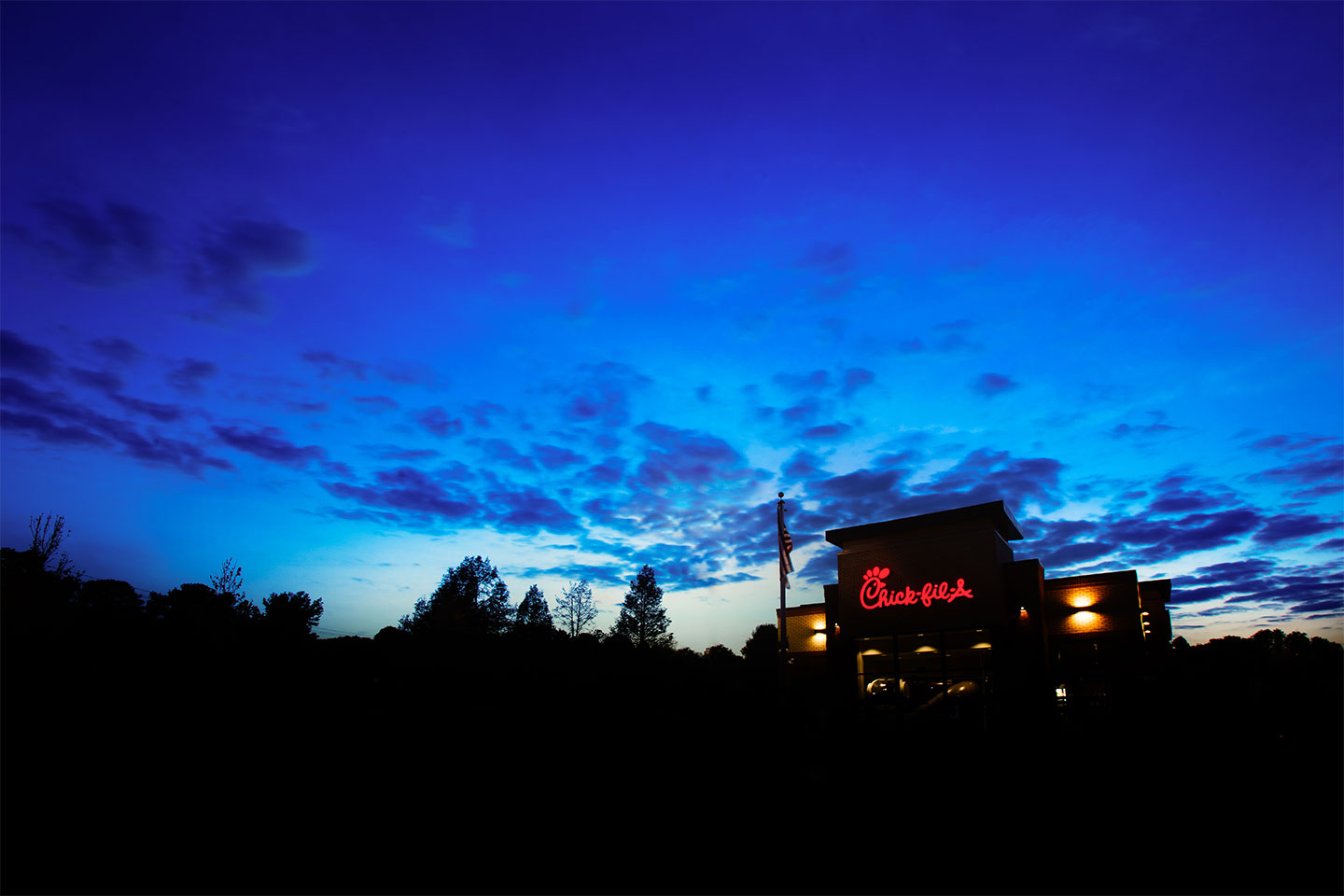How Should Chick Fil A Consider Changing Environment Technology Globalization Or Consumers

Inside Chick-fil-A
With each new restaurant, Chick-fil-A's Eatery Development Team is helping reduce structure waste.
When yous step foot in a new Chick-fil-A restaurant in the future, it may wait and experience similar to other restaurants but behind the scenes, the pattern and construction process is now much more than advanced and sustainable — with a big advantage being the reduction of waste during the structure process.
Structure waste is piling up in landfills, unable to be reused, with projections showing the global volume of annual construction waste matter to reach 2.2 billion tons by 2025. With more than 100 new restaurants planned for the next year, Chick-fil-A wanted to exist part of the solution.
Creating a positive touch on
Jeff Shaw, who leads the charge on sustainable restaurant design for Chick-fil-A in the Southwest, said the advances to the design and structure process accept transformed the style new Chick-fil-A restaurants are built.
"Our goal is to influence the industry in a positive way," Shaw said. "We knew that we had a unique opportunity to deliver a quality structure and a positive experience while reducing waste and costs — and that'due south exactly what we're doing now."
To do this, Chick-fil-A uses an industrialized structure approach to the blueprint, which entails amalgam sections of the edifice away from the site to save time and improve quality and consistency. In addition, Chick-fil-A follows a procedure called "Lean Construction" – efficient construction principles adjusted from the automotive industry. As a result, construction teams can be more than intentional with resources and comply with LEED (Leadership in Energy and Environmental Design) certification volume standards.
The Chick-fil-A Restaurant Development Team has already seen results in the last few years, including:
- 50 percent reduction in construction waste
- 80 percent decrease in length of the restaurant framework schedule, including roofing, siding, brick work and doors
- twoscore percentage decrease in length in the total eatery construction schedule
These reductions mean new Chick-fil-A restaurants are built in a more sustainable and efficient mode. In existing restaurants that are undergoing renovations , these updates improve h2o and energy use efficiency, and the faster construction schedule helps retain existing team members who might otherwise have to look for a new job.
Building with intention
Structure waste isn't limited to unused edifice materials; waste product tin take a variety of forms. That'south why the Restaurant Development Teams at Chick-fil-A focus on efficiency and implementing Lean Construction principles on every chore site. These best practices save time, energy and fuel when transporting materials and plan task sites so that equipment is within accomplish for workers, providing the tools and information they need for success.
The teams intentionally manage inventory to avoid ordering likewise many or besides few materials, which can lead to consequential waste. By leveraging technology and scheduling timetables, the teams as well cut down on wasted time past communicating well and giving all team members access to the most upwardly-to-date plan.
When it comes downward to information technology, efficiency is virtually setting the structure teams upward for success with the resource they need to perform. And with more than 300 professionals touching the pattern and structure of each new restaurant, Chick-fil-A is working collaboratively to implement sustainable practices from the ground up.
Source: https://www.chick-fil-a.com/stories/inside-chick-fil-a/sustainable-design-changing-the-way-chick-fil-a-restaurants-are-built
Posted by: alvarezbardid.blogspot.com


0 Response to "How Should Chick Fil A Consider Changing Environment Technology Globalization Or Consumers"
Post a Comment